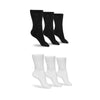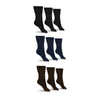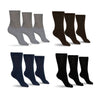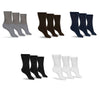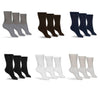Proudly Supporting American Craftsmanship
There was a time in America, when quality craftsmanship meant something. When family, community, and commitment meant something. Our mission is to keep these American values alive and well by making all our diabetic socks right here in the USA. Thank you for supporting American jobs by purchasing from Diabetic Sock Club.
1-Year Replacement Guarantee
Not that we expect this, but if for any reason your diabetic socks get a hole or wear out within the first year, just send them back and we'll replace them at no additional charge. We're committed to making the best darn diabetic socks you can get.

Diabetic Socks For Men & Women
-
Men's Ultra-Soft Upper Calf Diabetic Socks (4 Pair)
![]()
- Regular price
- from $39.99
- Sale price
- from $39.99
- Regular price
-
$79.95 - Unit price
- per
Sold out

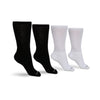
-
Men's Cotton Diabetic Crew Socks (6 Pair)
![]()
- Regular price
- $39.99
- Sale price
- $39.99
- Regular price
-
$79.95 - Unit price
- per
Sold out





-
Men's Cotton Diabetic Crew Socks (Assorted)
![]()
- Regular price
- from $46.95
- Sale price
- from $46.95
- Regular price
-
$79.99 - Unit price
- per
Sold out

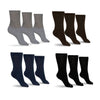
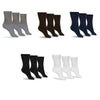

-
Men's Cotton Diabetic Ankle Socks (6 Pair)
![]()
- Regular price
- $39.99
- Sale price
- $39.99
- Regular price
-
$69.95 - Unit price
- per
Sold out


-
Women's Cotton Diabetic Crew Socks (6 Pair)
![]()
- Regular price
- $39.99
- Sale price
- $39.99
- Regular price
-
$79.95 - Unit price
- per
Sold out




-
Women's Cotton Diabetic Ankle Socks (6 Pair)
![]()
- Regular price
- $39.99
- Sale price
- $39.99
- Regular price
-
$79.95 - Unit price
- per
Sold out


-
Women's Over The Calf Compression Stocking Socks (1 Pair)
![]()
- Regular price
- from $19.99
- Sale price
- from $19.99
- Regular price
-
$31.95 - Unit price
- per
Sold out





-
Women's Cotton Diabetic Crew Socks (Assorted)
![]()
- Regular price
- from $46.95
- Sale price
- from $46.95
- Regular price
-
$79.99 - Unit price
- per
Sold out